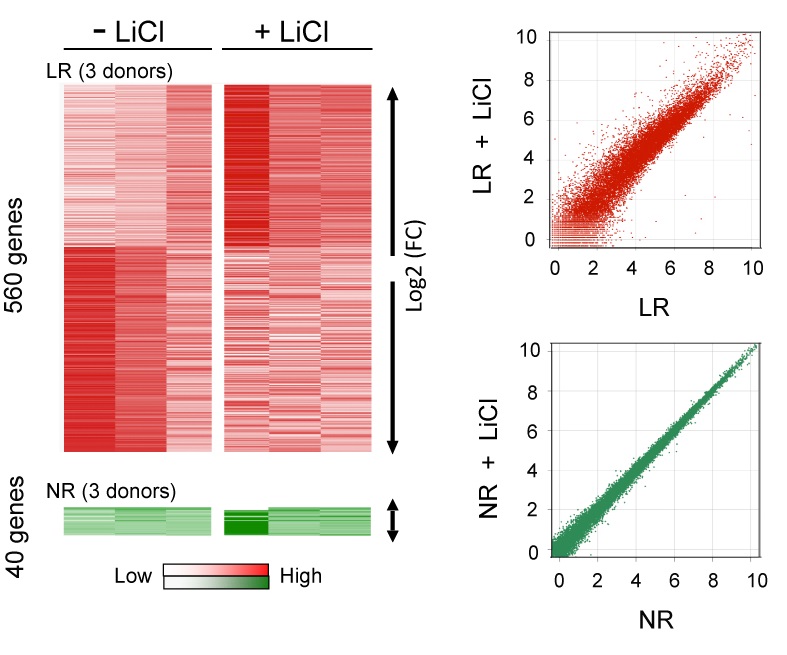Bipolar disorder (BD) is a complex neuropsychiatric disease that is characterized by intermittent episodes of mania and depression. Without treatment, patients may commit suicide. Hence, BD has been ranked by the WHO as a top disorder of morbidity and lost productivity. Clinically, lithium has been widely used to treat BD. However, more than half of BD patients are refractory to lithium treatment. Due to complex pathogenic mechanism in such neuropsychological diseases, and also lack of optimal animal models exhibiting two phenotypes of mania and depression simultaneously, the specific clinical medicine to BD hasn’t been developed. Recently, Prof. MI Shuangli from the Key Laboratory of Genomic and Precision Medicine, Beijing Institute of Genomics, Chinese Academy of Sciences, as one of collaborators, in cooperation with Prof. YAO Jun from Tsinghua-Peking Joint Center for Life Sciences, the Salk Institute of Biological Studies, and the University of California San Diego, revealed the mechanisms under the hyperexcitability phenotype of neurons and differential responses to lithium from bipolar patients. This work has published online in Nature on Oct. 29, 2015. Using the technology of induced pluripotent stem cell (iPSC), four reprogrammable factors were overexpressed in fibroblasts derived from the healthy individuals or manic patients to obtain iPSCs, which were differentiate into hippocampal dentate gyrus granule cell-like (DG-like) neurons. Guided by RNA-seq expression profiling, scientists detected an enhancement of mitochondrial function in the BD neurons using mitochondrial assays and, using both patch clamp recording and somatic Ca2+ imaging, they observed hyperactive action potential firing which might be the result of extra energy resource provided by the enhanced mitochondrial. Further, they used lithium chloride to treat DG-like neurons derived from Li-responsive patients and found that the hyperactivity of neurons could be selectively diminished by the Li treatment. In contrast, Li failed to induce any obvious changes in the DG-like neurons derived from Li-non-responsive. By RNA-seq analysis, the genes that are likely key for the BD pathology and Li response were determined. Therefore, the neuronal hyperactivity and differential response to lithium treatment revealed by our BD iPSC model in directly associated with the clinical symptom of mania in the BD patients. In summary, the findings revealed by the BD neuronal model based on iPSC technology represent an important first step in understanding the pathophysiology of BD, improving diagnosis, and perhaps developing novel therapeutics for treatment of the disease. This work was supported by National Natural Science Foundation of China and National Basic Research Program of China, China Ministry of Science and Technology. Lithium significantly altered the gene expression profile of the Li-responsive (LR) neurons but not the Li-non-responsive (NR) neurons.(Figure is adapted from Mertens J et al, Nature (2015), doi.1038/nature 15526) 
